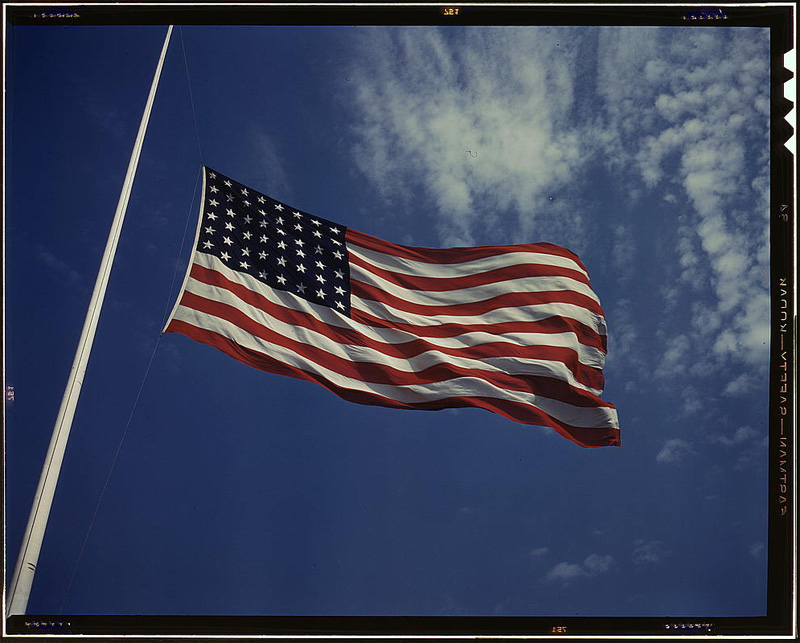
A helpful guide from National Geographic Magazine on the proper display and care of the colors, published in 1917:
While there is no federal law in force pertaining to the manner of displaying, hanging, or saluting the United States flag, or prescribing any ceremonies that should be observed, there are many regulations and usages of national force bearing on the subject.
In raising the flag it should never be rolled up and hoisted to the top of the staff before unfurling. Instead, the fly should be free during the act of hoisting, which should be done quickly. It should be taken in slowly and with dignity. It should not be allowed to touch the ground on shore, or the deck of a ship, nor should it be permitted to trail in the water or in the dust. It should not be hung where it can be contaminated or soiled easily, or draped over chairs or benches for seating purposes, and no object or emblem of any kind should be placed upon it or above it.
A common but regrettable practice at public meetings is to drape the flag like a tablecloth over the speaker’s table and then to place on the flag a pitcher of ice water, flowers, books, etc. Another equally careless practice, and, unfortunately, quite common, is to tie small United States flags to the bottom of a stage curtain; when the curtain is raised the flags are lifted aloft and are effectively displayed, hut when the curtain is lowered, so that the stage scenes may be shifted, the flags trail in the dust of the stage floor.
The flag should not he festooned over doorways or arches. Always let the flag hang straight. Do not tie it in a bow knot. Where colors are desired for decorative purposes, use red, white, and blue bunting.
The flag should not be hoisted upside down, other than as a signal of distress at sea, when it may, if necessary to accentuate the distress and make it easily recognized at a distance, be knotted in the middle of its length, forming what is called a “weft.”
International usage forbids the display of the flag of one nation above that of any other with which it is at peace. Such an act is considered an insult in times of peace, and is always followed by a demand for an explanation and apology. When the flags of two or more nations are displayed, they should be on separate staffs, or on separate halyards of equal size and on the same level.
The flag should never be raised or lowered by any mechanical appliance.
When the national colors are passing on parade, or in review, the spectator should, if walking, halt, and if sitting, arise and stand at attention and uncover.
When flags are used in unveiling a statue or monument they should not be allowed to fall to the ground, but should be carried aloft to wave out, forming a distinctive feature during the remainder of the ceremony.
Where the national flag is displayed with State or other flags, it should be given the place of honor on the right. Its use should be confined as much as possible to its display upon the staff. Where used as a banner, the union should fly to the north in streets running east and west, and to the east in streets running north and south.
Old, faded, or worn-out flags should not be used for banners or other secondary purposes.
When no longer fit for display, the flag should be destroyed privately, preferably by burning or other methods lacking the suggestion of irreverence or disrespect.
Image of the Stars and Stripes from the Library of Congress archives, photographed by Alfred T. Palmer.
Comments are closed.